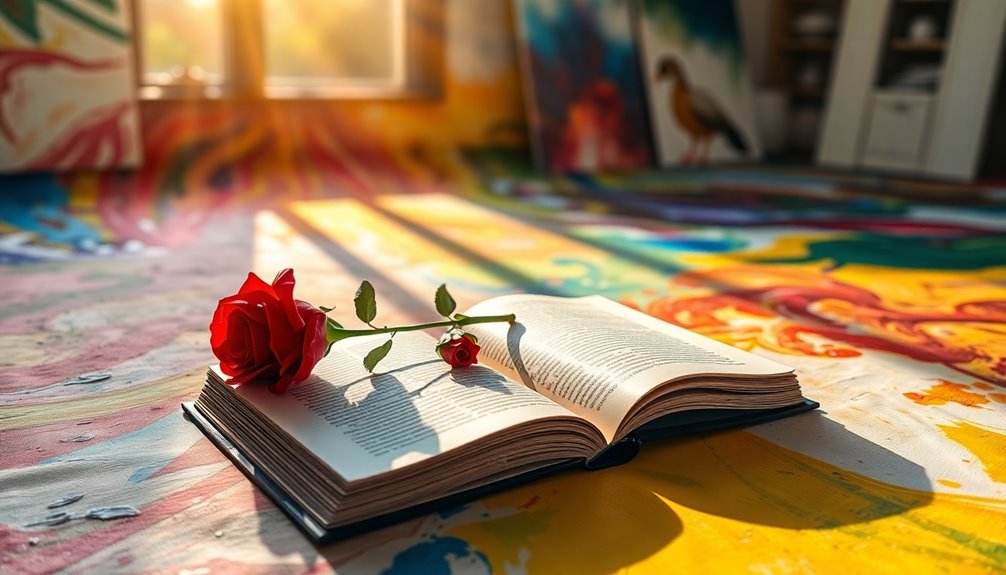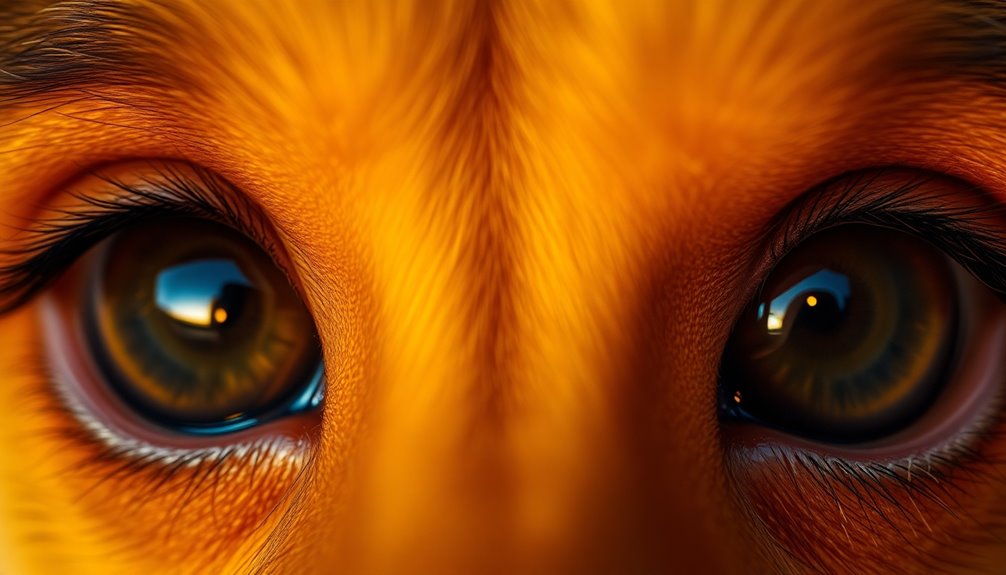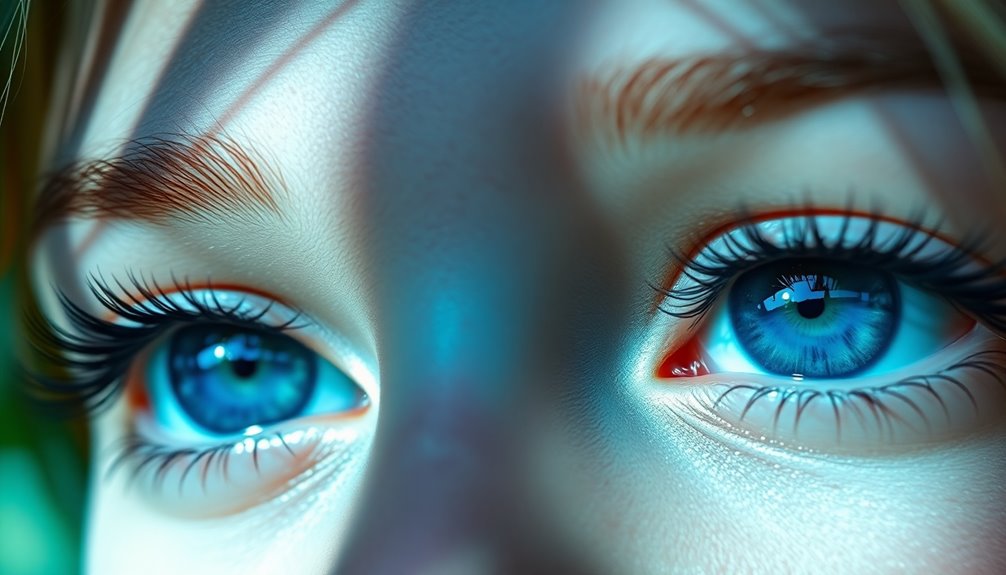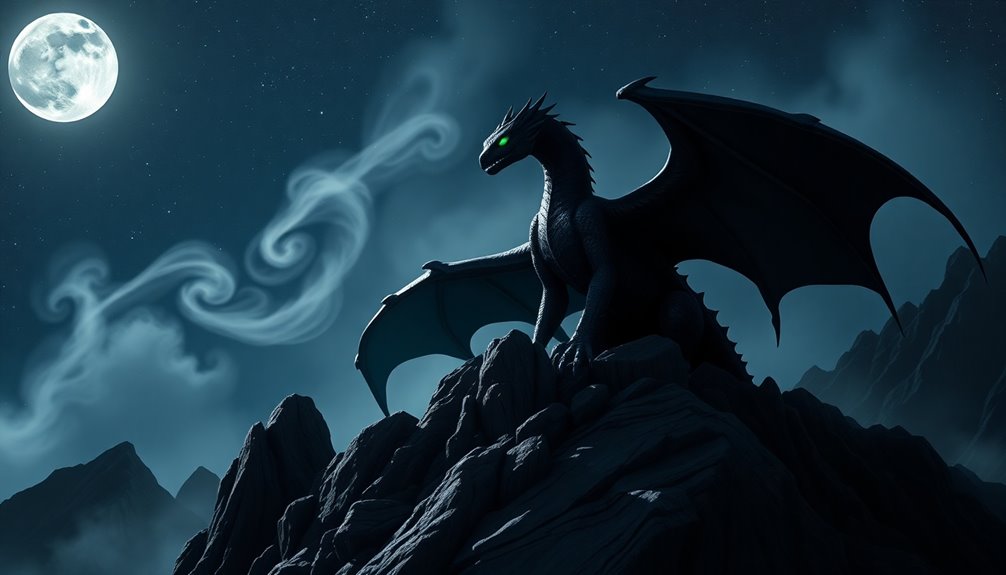Symbolism in art is all about expressing emotions and ideas using bold images and colors. It invites you into a dreamy world where feelings take center stage. Instead of showing things exactly as they are, artists like Paul Gauguin and Odilon Redon use symbols to share deeper meanings about love, death, and spirituality. You'll see vibrant colors and unique styles that spark your imagination. This movement started in the late 1800s and has influenced many art styles, making it exciting to explore. If you keep exploring, you'll uncover even more fascinating details about this enchanting art!
Key Takeaways
- Symbolism in art is a movement that emphasizes emotional expression and subjective interpretation through symbolic imagery and vibrant colors.
- It emerged in the late 19th century as a reaction against realism and naturalism, focusing on spirituality and the subconscious.
- Common themes include love, death, and desire, often depicted with abstract forms and vivid palettes to evoke deeper meanings.
- Notable Symbolist artists include Odilon Redon, Paul Gauguin, and Gustave Moreau, who explored emotional depths and mythological subjects.
- Symbolism laid the groundwork for later movements like Surrealism and Expressionism, influencing contemporary artistic expressions with its focus on emotion and meaning.
Overview of Symbolism
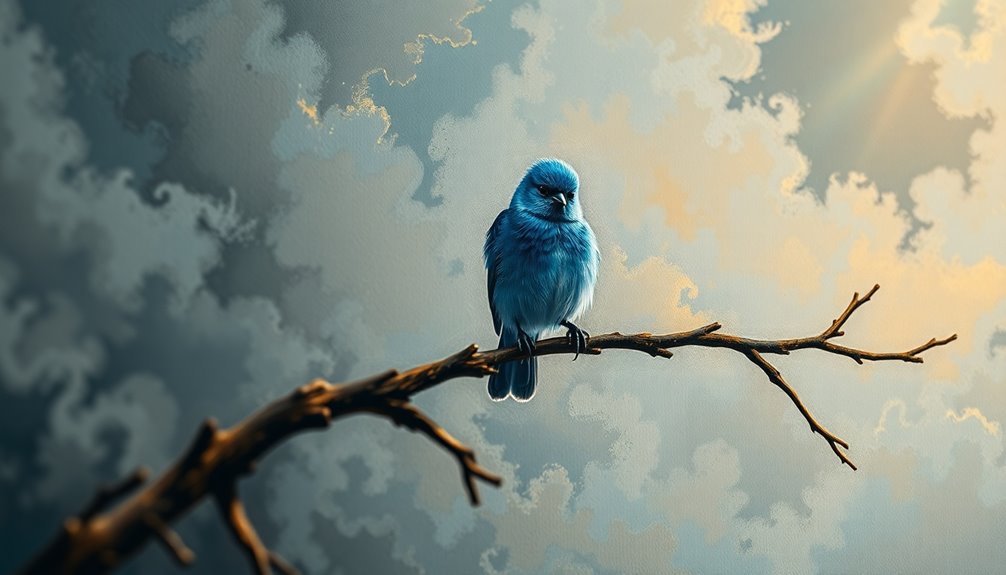
Symbolism in art, which emerged in the late 19th century, marked a significant shift away from naturalism and realism. This exciting movement focused on emotional expression and subjective interpretation, allowing artists to explore deeper feelings and ideas. Instead of just showing things as they are, Symbolist artists used symbolic imagery and vibrant colors to create dream worlds that spark imagination.
In this movement, artists like Gustave Moreau, Odilon Redon, and Paul Gauguin played an essential role. They incorporated mythological and dreamlike themes, diving into the psychological and spiritual aspects of life. Their artwork often reflected broader societal anxieties, like worries about industrialization and a growing interest in the subconscious and spiritualism.
The legacy of Symbolism continues to thrive today. It has influenced many modern art movements, such as Expressionism, Surrealism, and Abstract art.
Key Concepts and Themes

Art's exploration of emotions and ideas is at the heart of Symbolism, which emphasizes abstract forms, colors, and imagery to evoke feelings and provoke thought. Symbolist artists dive deep into themes of spirituality, dreams, and the subconscious. They react against modernity and industrialization, creating works that reflect their inner worlds.
You'll find common motifs in Symbolist art, like love, death, and desire. These themes are expressed through vibrant color palettes and stylized forms, inviting you to explore the deeper meanings behind each piece.
To help you understand these concepts better, here's a quick table:
| Concept | Description | Influence |
|---|---|---|
| Abstract Forms | Shapes and colors that symbolize emotions and ideas | Invites personal interpretation |
| Spirituality | Themes that reflect a connection to something greater | Explores inner beliefs |
| Motifs | Recurring symbols like love and death | Engages viewers on multiple levels |
Notable Symbolist Artists
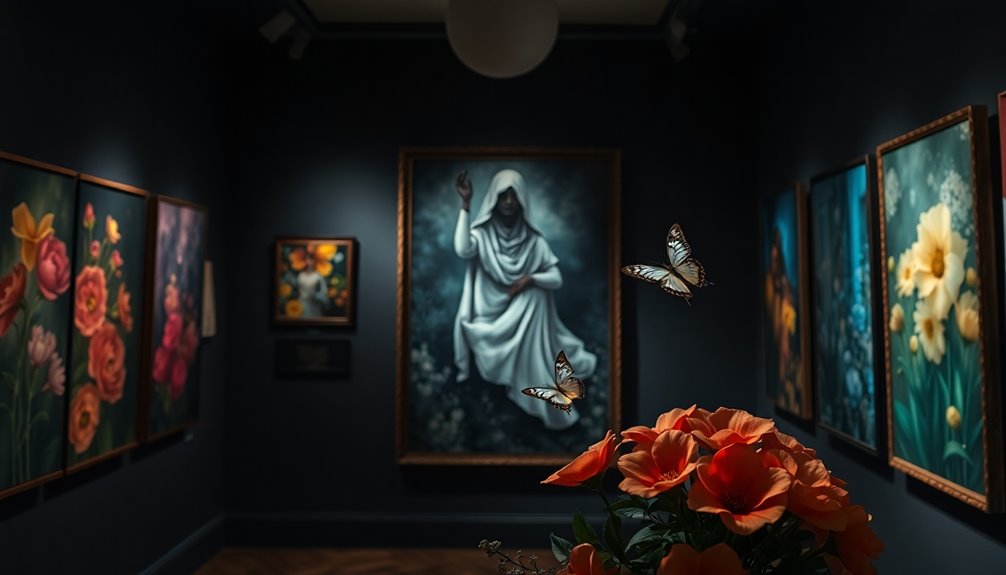
Now, let's explore some amazing Symbolist artists who changed the way we see art!
You'll meet Odilon Redon, Paul Gauguin, and others who used their imaginations to create stunning works that go beyond everyday life.
Their unique styles and ideas not only shaped Symbolism but also influenced many art movements that followed.
Key Figures Overview
The Symbolist movement in art is defined by its exploration of emotions, dreams, and the subconscious, with several key figures leading the charge. One of the most important artists is Odilon Redon, who created dreamlike lithographs that focus on imagination rather than just reality. You might find his work truly enchanting!
Another notable figure is Paul Gauguin, whose painting "Vision of the Sermon" (1888) is often seen as the first Symbolist work. It features flat forms and bright colors to express spirituality, inviting you into a dream world of color and feeling.
Gustave Moreau is also significant, known for his intricate mythological subjects that blend details with symbols to explore deep emotions.
Then there's Edvard Munch, famous for his painting "The Scream." His works highlight modern anxieties and existential themes, making him a key player in the Symbolist movement.
Lastly, Gustav Klimt's Art Nouveau style reflects Symbolist influences, especially in "The Kiss," where he explores controversial themes and psychological depth.
Together, these artists shaped the Symbolist movement, encouraging you to embrace abstract ideas and emotional experiences in art!
Impact on Art Movements
While exploring the impact of Symbolism on various art movements, you'll find that its influence is particularly evident in the works of notable artists like Paul Gauguin and Edvard Munch. Paul Gauguin's painting "Vision of the Sermon" is a great example. It uses vivid colors and simple shapes to express deep spirituality. This piece showcases how Symbolism captures emotional depth.
A diverse group of artists embraced Symbolism, including Odilon Redon, who created dreamy lithographs that spark the imagination. His work steered away from strict naturalism, focusing instead on dreams and visions.
Edvard Munch, known for his emotional themes, explored feelings like alienation and anxiety, reflecting Symbolism's focus on psychological depth.
Gustav Klimt's art brought together Symbolism and Art Nouveau, blending themes of eroticism and spirituality. This mix enriched both styles, showing how Symbolism laid the groundwork for future movements like Expressionism and Surrealism.
These new styles built on Symbolism's ideas of emotional depth and subjective interpretation, making art even more exciting and personal. Through these artists, you can see just how powerful the influence of Symbolism has been on the world of art!
Iconic Symbolist Artworks
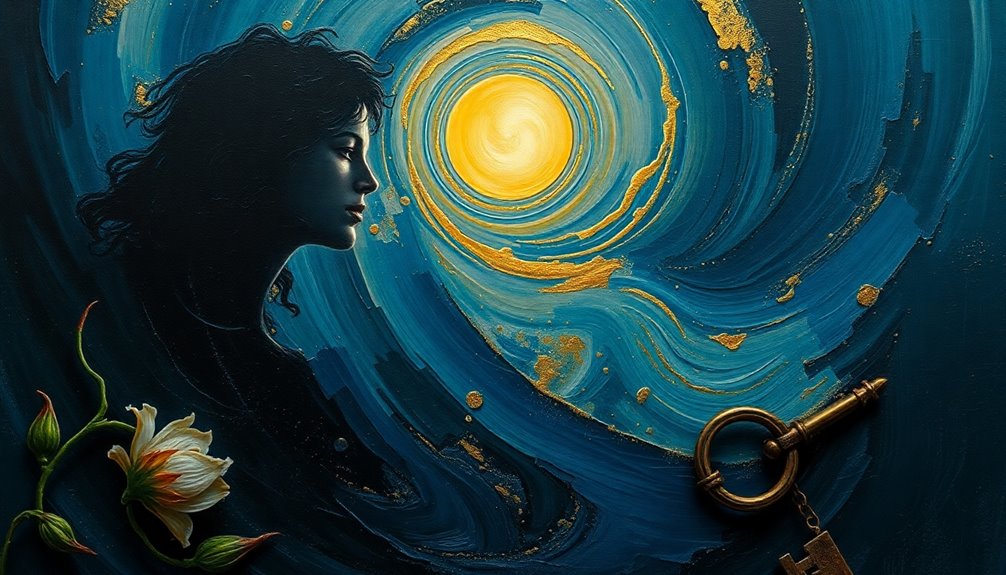
Among the many masterpieces of Symbolism, certain iconic artworks stand out for their profound emotional depth and innovative use of imagery.
Take Paul Gauguin's "Vision of the Sermon," for example. This painting uses simplified forms and vivid colors to explore spiritual themes. It invites you to plunge into a world beyond the ordinary.
Gustave Moreau's "Jupiter and Semele" is another gem. It illustrates mythological subjects with rich detail, reflecting the emotional depth that Symbolist artists love to express.
Then there's Odilon Redon's "The Eye Like a Strange Balloon Mounts Toward Infinity," which captivates you with its dreamlike imagery and surreal composition, bringing the subconscious to life.
James Ensor's "Death and the Masks" takes you on a journey through the human condition, integrating macabre elements with emotional undertones.
Finally, Jan Toorop's "The Three Brides" combines allegorical content and decorative patterns, beautifully merging Symbolism with the Art Nouveau movement.
These iconic Symbolist artworks not only captivate but also encourage you to reflect on deeper meanings about life, love, and existence. Each piece invites you into a fascinating world!
Influence on Later Movements
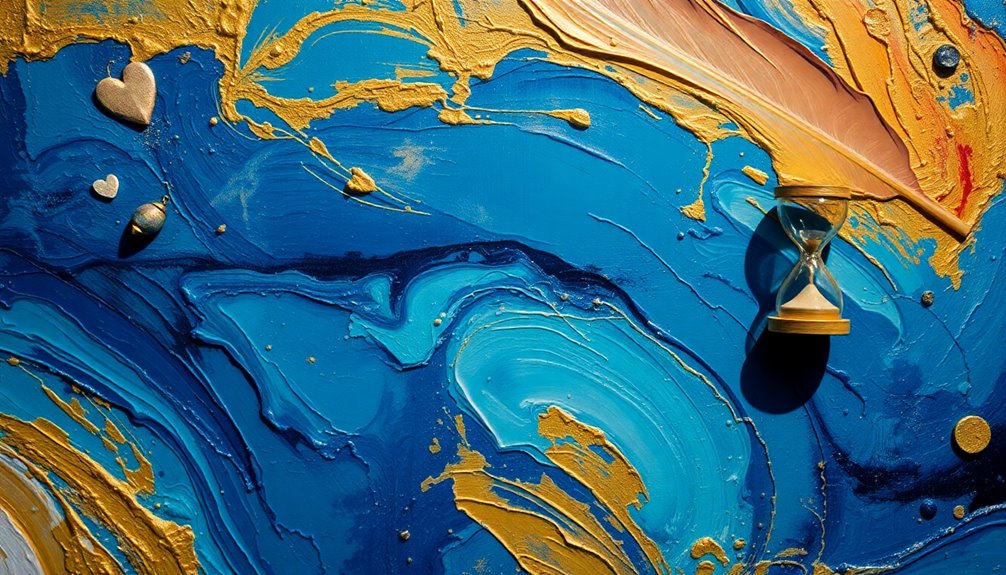
Symbolism set the stage for a wave of artistic movements in the 20th century, profoundly shaping how artists approached emotional and psychological themes. This movement inspired artists to dive deeper into emotional expression, leading to styles like Expressionism and Surrealism.
You can see how artists like Pablo Picasso and Salvador Dalí embraced Symbolist ideas, creating works that explored the subconscious. They painted not just what they saw, but what they felt.
The focus on subjective experience from Symbolism also influenced Art Nouveau, which shared decorative qualities and themes with Symbolism. Both movements celebrated beauty and emotion in art.
As artists rejected direct representation and materialism, they opened the door to Modern art, encouraging a shift toward abstraction and raw expression.
Today, the legacy of Symbolism still shines bright. Many contemporary artists engage with its themes of spirituality, dreams, and psychological exploration.
This connection shows how Symbolism continues to inspire creativity and innovation. So, whether you're looking at a dreamy painting or an abstract piece, remember that the spirit of Symbolism is still alive, encouraging artists to express their innermost thoughts and feelings. Isn't that exciting?
Symbolism Across Cultures

Art isn't just a visual experience; it's a language that speaks across cultures through symbolism. When you explore different cultures, you'll find that symbolism transcends cultural boundaries.
For instance, African tribal masks use vibrant colors and patterns to express complex ideas. In ancient Egypt, hieroglyphs served as symbolic imagery, where animals and objects conveyed deeper meanings tied to mythology and the afterlife.
Color symbolism plays a big role too! In Chinese art, red often represents luck and prosperity, while in Western cultures, it might symbolize love or danger.
Similarly, Indigenous Australian art uses dot painting to tell stories. Each pattern and color connects to ancestral beliefs and the land.
You can also see how symbolism blends with local traditions. Artists like Gustav Klimt in Austria combined folk motifs with symbolic representations of human experiences and relationships.
This blending creates a rich tapestry of meaning that resonates with everyone, no matter where they're from.
Resources for Further Exploration
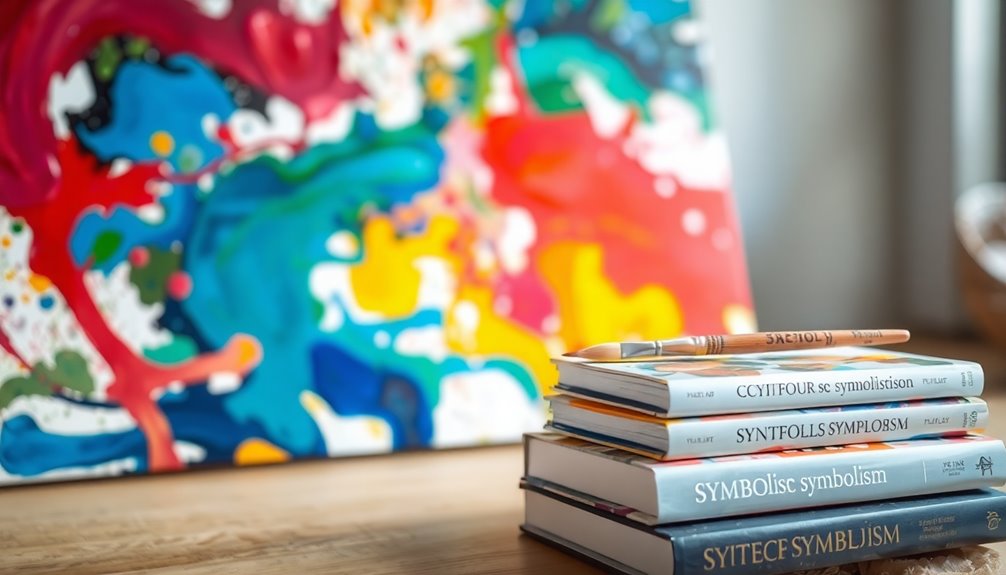
To deepen your understanding of symbolism in art, a wealth of resources awaits your exploration. These resources will help you uncover the beauty of this literary movement and its connection to modern society.
You'll discover how artists, including Gustave Moreau and Odilon Redon, expressed feelings of isolation through their ornamental style. Here are some great ways to dive deeper:
- Read the Symbolist Manifesto: This foundational text by Jean Moréas outlines the principles of Symbolism and critiques naturalism in art and literature.
- Explore key artworks: Visit museums or galleries, like the National Galleries of Scotland, to see significant Symbolist works and learn about their impact across Europe.
- Check out academic articles: These can show you how Symbolism influenced later movements like Surrealism and Expressionism, revealing its lasting legacy.
- Watch documentaries and lectures: Engaging videos discuss the themes and characteristics of Symbolism, helping you understand the movement's evolution and significance.
With these resources, you'll gain a deeper appreciation for Symbolism and Art, enriching your connection to the real world and its artistic expressions.
Enjoy your journey!
Frequently Asked Questions
What Does Symbolism Mean in Art?
Symbolism in art means using images and objects to represent deeper ideas or feelings. Instead of just showing what things look like, artists create pictures that express emotions like love or sadness.
You might see bright colors and dreamy shapes that make you think or feel something special. It's all about connecting with your thoughts and imagination!
What Is an Example of a Symbol in Art?
One exciting example of a symbol in art is the skull, often seen in paintings like Hans Holbein the Younger's "The Ambassadors."
Here, the skull represents mortality, reminding you that life is fleeting. It makes you think about how precious every moment is!
Another great symbol is the color red in Gustav Klimt's "The Kiss," which stands for love and passion, adding warmth to the beautiful scene.
Isn't that fascinating?
How Do You Show Symbolism in Art?
To show symbolism in art, you can use colors that express feelings, shapes that tell stories, and images that represent ideas.
For example, a bright sun can symbolize happiness, while dark clouds might show sadness. You can also combine objects, like flowers and skulls, to explore themes of life and death.
What Is Symbolism in Art and Realism?
Symbolism and realism in art are like two friends with different styles.
Realism shows life as it is, focusing on everyday scenes and people. You see all the details, just like a photograph.
On the other hand, symbolism uses images and colors to express feelings and ideas. It dives into dreams and emotions, making you think deeper.
While realism is straightforward, symbolism invites you to explore a world of imagination and meaning.
Isn't that exciting?
Conclusion
To sum up, symbolism in art is like a treasure chest filled with hidden meanings. It invites you to explore and discover the stories behind each piece. From vibrant colors to unique shapes, every artist uses symbols to share their thoughts and feelings. As you dive deeper into this magical world, you'll find that art can speak to your heart in ways words sometimes can't. So go ahead, keep looking and let your imagination soar!

